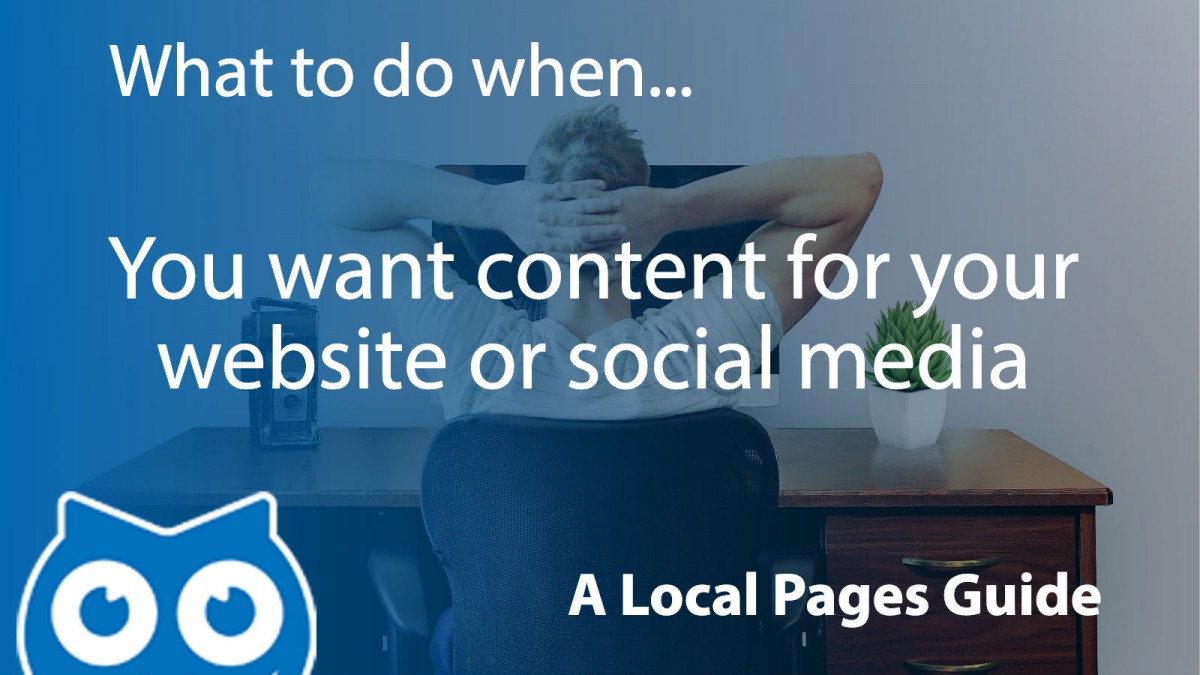Everyone in business knows that we should be engaging with our customers on a daily basis with rich, informative content. It sounds great until you actually sit down, switch on your computer… and then stare at it for an hour because you don’t know where to start.
So to help get your creative juices going, here are our top 20 ways of engaging with your customers online.
1 – Infographics – Create some visual representations of ideas and information found on your website. Infographics are so much more interesting (and often more informative) than large passages of text.
2 – Memes – Those little videos and images with witty comments are often the messages that go viral.
3 – Videos – Create videos (short & sweet) giving information regarding your products and services. Don’t worry about how you sound or look like, non-professionally produced videos appear much more authentic.
4 – Product Reviews – Got a new product? Put together a product review to allow customers an insight into what you really think.
5 – User Generated Content – Get customers to produce content for you. Share stories and content from third party websites you find interesting or promote good practice.
6 – How to Guides – Put together a range of helpful guides aimed at people that use your products and services.
7 – Lists – People love lists and they improve talkability. Even a list like this one!
8 – Photo Galleries – A picture paints a thousand words. Create galleries of products and theme them to make them more interesting.
9 – Case Studies – Use these to show the breadth and depth of what you have to offer your customers and underline how great you are. Make sure they’re up-to-date and are heavy on pictures and light on text.
10 – Client Testimonials – Testimonials build trust and loyalty. So when a customer says what you did was great, ask for it in writing. Better still, ask if you can film them saying it.
11 – Newsletters – Keep in touch with your email subscribers with a monthly update featuring new products and the highlights of any articles, blogs, videos and social media posts you’ve put out that month.
12 – GIFS – Use clips from videos embedded with text to demonstrate a point.
13 – Events – Create online events like Zoom webinars to engage with your customers , record them and share with others that couldn’t attend.
14 – Images – Use, wherever possible, original images to demonstrate and reinforce written messages.
15 – Podcasts – To convey ideas that don’t necessarily require visuals, put together some podcasts on various themes that may interest your customers.
16 – Slideshares – Get innovative with Powerpoint or Keynote and create decks of slides to inform and engage with your customers and share them online.
17 – Blog Posts – If no one was interested in opinions, they wouldn’t buy newspapers. Get your thoughts down in order and publish them. Try to ensure they are not time sensitive and can be read anytime.
18 – Newsjacking – Take a news story and use it to create content that will attract positive exposure for your brand.
19 – Press Releases – Directly target the media with industry news that may be of interest to their readers.
20 – Polls – Create polls to get your customers voting and seek out their preferences and their dislikes.
If you need help with any of the above, contact the Local Pages team on 0117 923 1122 or drop us a line at info@localpages.co.uk
Leave a comment on 20 Top Tips for Creating Engaging & Informative ContentCategories Blog, Branding, Creative, Design, Help & Advice, Marketing, Small businesses, Social media, Websites












